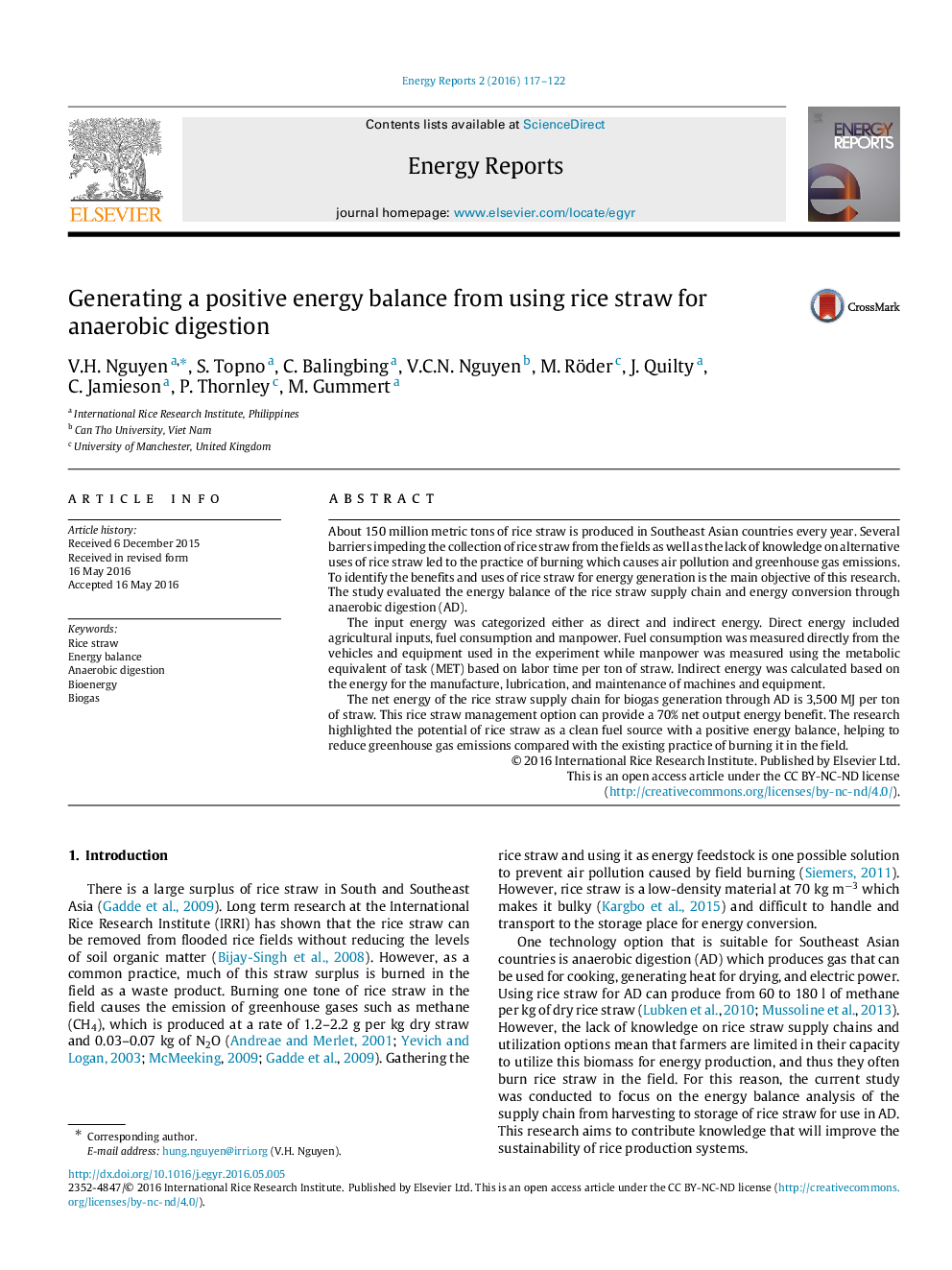| Article ID | Journal | Published Year | Pages | File Type |
|---|---|---|---|---|
| 1736748 | Energy Reports | 2016 | 6 Pages |
About 150 million metric tons of rice straw is produced in Southeast Asian countries every year. Several barriers impeding the collection of rice straw from the fields as well as the lack of knowledge on alternative uses of rice straw led to the practice of burning which causes air pollution and greenhouse gas emissions. To identify the benefits and uses of rice straw for energy generation is the main objective of this research. The study evaluated the energy balance of the rice straw supply chain and energy conversion through anaerobic digestion (AD).The input energy was categorized either as direct and indirect energy. Direct energy included agricultural inputs, fuel consumption and manpower. Fuel consumption was measured directly from the vehicles and equipment used in the experiment while manpower was measured using the metabolic equivalent of task (MET) based on labor time per ton of straw. Indirect energy was calculated based on the energy for the manufacture, lubrication, and maintenance of machines and equipment.The net energy of the rice straw supply chain for biogas generation through AD is 3,500 MJ per ton of straw. This rice straw management option can provide a 70% net output energy benefit. The research highlighted the potential of rice straw as a clean fuel source with a positive energy balance, helping to reduce greenhouse gas emissions compared with the existing practice of burning it in the field.
